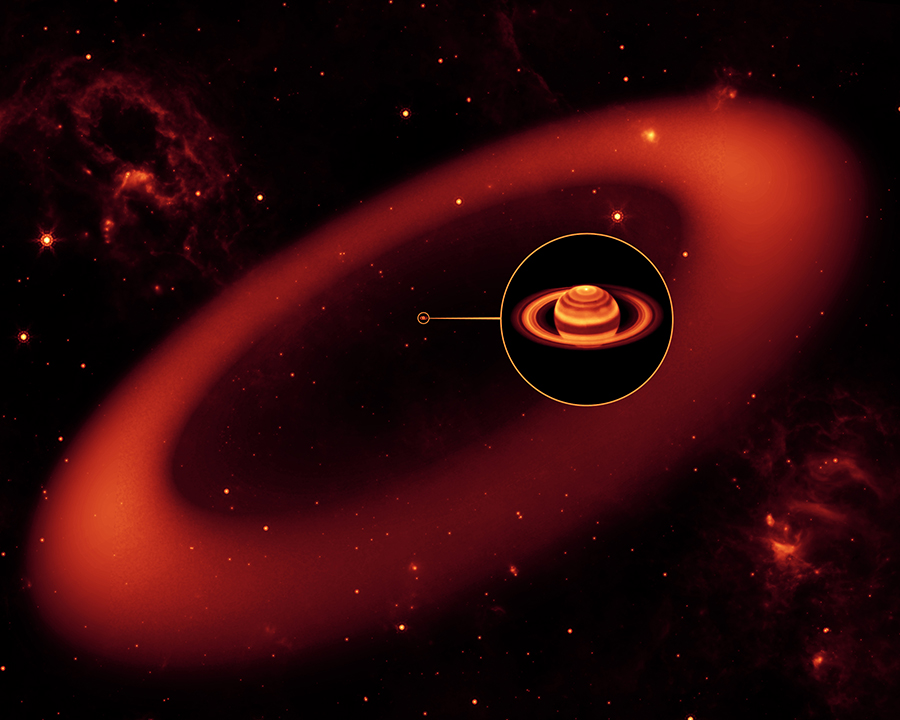Saturn’s Super Outer Ring
June 15, 2015
The ring system of Saturn was found to be even more spectacular last week. A team led by Douglas Hamilton of the University of Maryland observed the planet’s giant outer ring using the Spitzer Space Telescope and found it to be even larger than scientists previously thought. They reported their findings in the journal Nature.

This artist’s conception shows a nearly invisible ring around Saturn — the largest of the giant planet’s many rings. It was discovered by NASA’s Spitzer Space Telescope. The artist’s conception simulates an infrared view of the giant ring. Saturn appears as just a small dot from outside the band of ice and dust. The inset shows an enlarged image of Saturn, as seen in infrared light. The ring, stars and wispy clouds are an artist’s representation. (Credit: NASA/JPL-Caltech/Keck)
Saturn’s seven most recognizable rings surround the planet at its equator but do not touch it. They consist mainly of pieces of ice, ranging from dust-sized grains to chunks more than 10 feet (3 meters) in diameter. These rings are named after the letters of the alphabet. The largest and most distant of these rings, the E ring, extends from about 110,000 miles (180,000 kilometers) from the center of Saturn to 300,000 miles (480,000 kilometers) away from the planet.
In 2009, Hamilton and other scientists found a diffuse doughnut-shaped ring far beyond the orbit of the previously known rings using the Spitzer Space Telescope. This year, Hamilton and his colleagues reexamined the ring and were able to better estimate its size and makeup. They found it extended from about 3.7 million miles (6 million kilometers) to about 10 million miles (16 million kilometers) from Saturn’s surface. They also discovered that the ring is mostly made up of small pieces less than 8 inches (20 centimeters) in diameter, as opposed to the chunkier main rings.
This giant ring may show a strange interaction between two of Saturn’s natural satellites (moons). The ring is centered around the orbit of the moon Phoebe. Scientists suspect that Phoebe released the dust that now forms the giant outer ring. Furthermore, some scientists think that this dust gave another moon its odd coloration. One side of Iapetus is made up of very bright material, while the other side is dark. Its orbit crosses through the Phoebe ring, so dust landing on one side of the satellite may have caused the color differentiation.
Other World Book articles:
- Space exploration
- Astronomy (2003-a Back in Time article)
- Close Encounters with Saturn (a Special Report)


